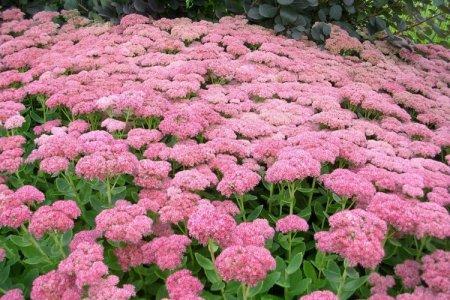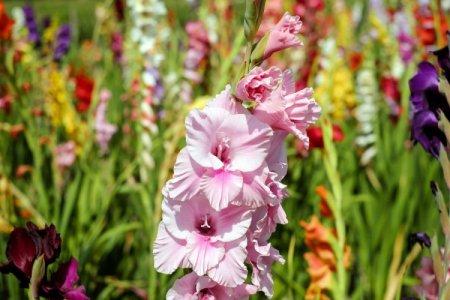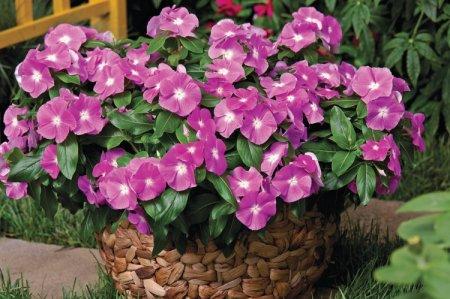
The curly liana of the kobei is striking in its growth rate. It is chosen for vertical gardening, arches, gazebos, verandas, balconies and complex landscape compositions. Even with such an impressive scale, kobei can be raised by beginners. Let's tell you more!
general information
Kobeya is a climbing annual dwarf shrub that naturally lives in the tropics and subtropics. She has a very powerful and highly branched rhizome and a fantastic growth rate. Even during the season, individual shoots sometimes stretch up to 6 m.
The stalks of the kobei are covered with spectacular three-lobed leaves of the pinnate type. Twisted tendrils grow on them, with the help of which the vine clings to the support.
In addition, the kobea blooms with large bells up to 8 cm in diameter, collected in small groups. At first they are greenish, but as they unfold, they change color to white or purple.

Kobei species
Of all the varieties of kobei, only one is cultivated in ornamental gardening - climbing. Its long shoots extend up to 4 m, are densely covered with tenacious tendrils and perfectly hold on to a support. Breeders have bred several white and purple varieties for every taste.

Kobe care
Despite its exotic origin, kobei have been cultivated in Europe for almost 300 years, so no surprises await you. We will tell you what nuances you should pay attention to!
Temperature
Kobeya is thermophilic, so it does not tolerate temperatures below 5-7 degrees. If, after transplanting, frosts suddenly hit the street, be sure to cover it with non-woven material in two layers.

Lighting
The tropical vine prefers bright sunlight, and will grow much faster on it. Light partial shade is also fine, but be sure to take care of protection from gusts of wind and drafts.

Watering
Kobei needs to be watered intensively and regularly, especially during dry periods. A plant of this size needs a lot of moisture. But make sure that the water does not stagnate at the roots, because they will begin to rot.

The soil
Kobe needs a loose, fertile soil, but its other characteristics are not fundamental. An ordinary store mix is suitable for seedlings.

Fertilizers and feeding
Feed the young kobe with nitrogen fertilizers every week. They are gradually introduced from the first days of the plant's life, immediately after the formation of the first leaves. In the future, you can alternate mineral mixtures with organics.

Pruning
Kobei, which is grown as an annual, does not need to be trimmed and shaped. But this does not apply to sanitary pruning: remove painful, broken and weak branches as early as possible.

Wintering
Kobeya does not hibernate in the open field, but it can be saved. Cut off the shoots, carefully transplant the bush into a large flowerpot and leave it indoors at 10-12 degrees, watering about once a month. By March, move the flowerpot closer to the light, and gradually move on to normal daily care and watering.

Planting and breeding kobei
The hardest part of growing a kobei from seed is preparing the seed. The fact is that a too hard crust on the seeds must first be soaked in water for several days, and then carefully removed mechanically. Moreover, most likely, you will have to carry out the procedure in several passes.
Prepared seeds are planted with seedlings in February immediately in separate cups. Any universal substrate will do, and in a couple of weeks the first shoots will appear. After the appearance of the first leaves, seedlings with a whole earthy clod are transplanted into large pots or jars to build up the root system. At the same time, the first support is already needed.
Gradually harden the seedlings on the balcony or take them out into the yard, increasing the time.When the night temperature does not drop below 5 degrees, around the end of May you can transplant the kobei into the open ground.
There should be a distance of 0.5-1 m between the holes. Immediately upon landing, install permanent supports, because otherwise the kobea will find them on its own.
It is easier and faster to propagate the kobei by cuttings, which are cut from the mother bushes after wintering indoors. Root them in wet sand in spring, and by June you can transplant them into open ground. So the kobei will bloom faster than with seed reproduction.

Pest and disease control
The main problem of kobei is fungus, but it is a disease of improper care. With careful control of soil moisture and periodic thinning of the thickest areas, there will be no problem. Otherwise, remove all affected parts and treat the vine with fungicides.
Of the pests, aphids and spider mites live in kobei. But it is very easy to deal with them, and with different means - from soap solution to zoo shampoos or special insecticides.

Kobei - photo
If you still doubt whether you need such a giant liana in the garden, we suggest you see how good it is!
























